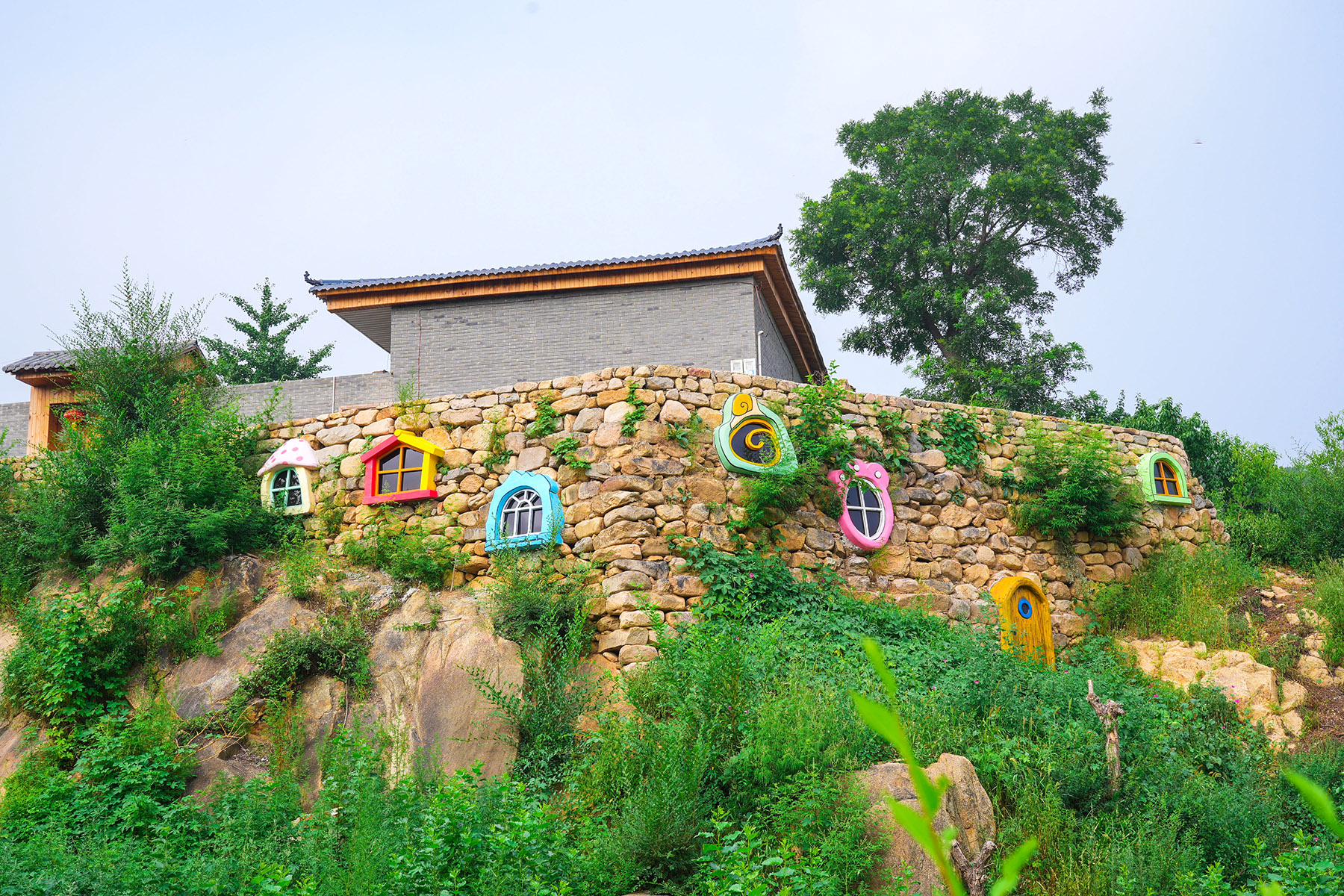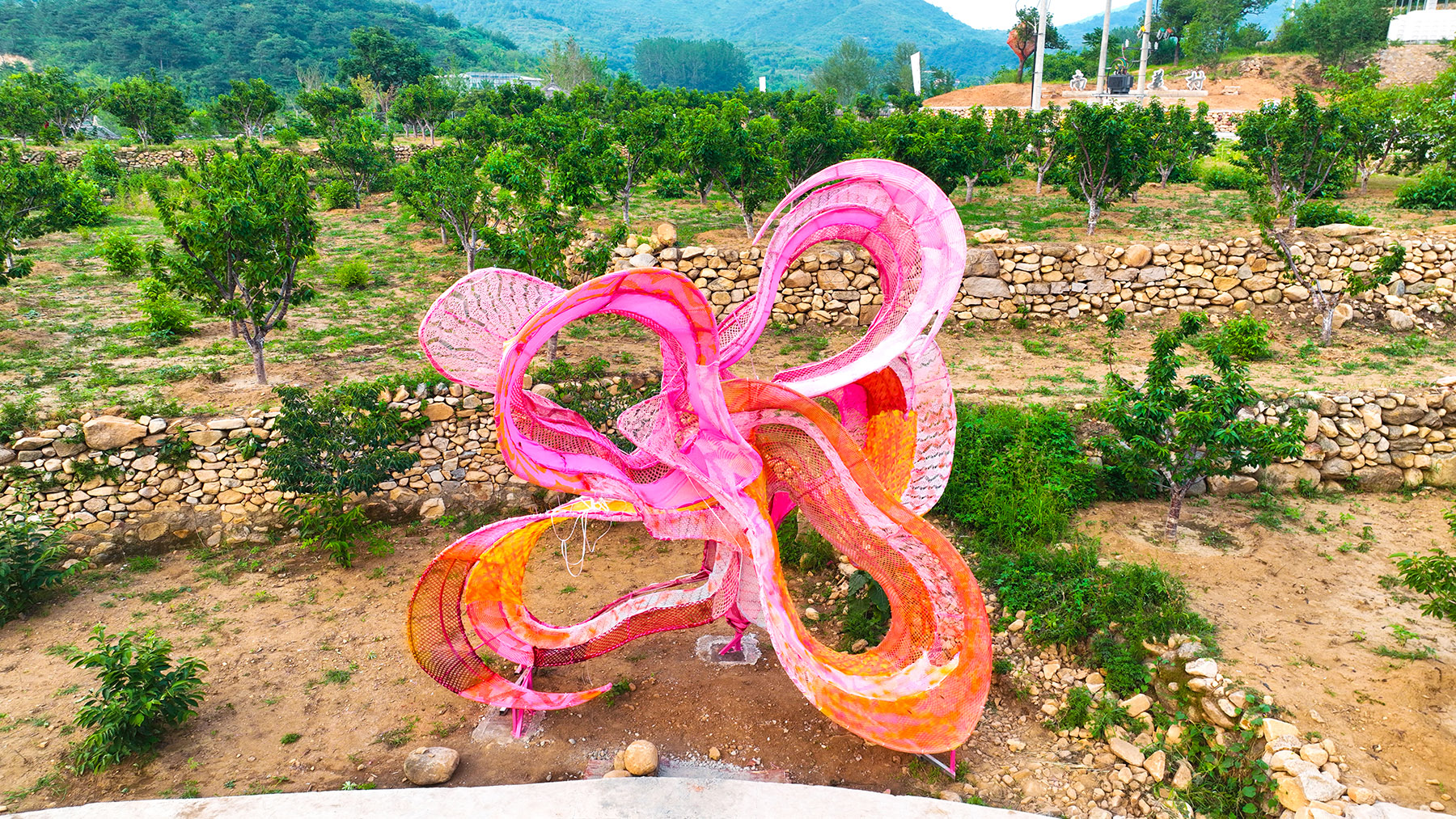
Beijing's Nanshan village in Pinggu district, once an underdeveloped rural area, has transformed into a popular destination for tourists driven by its rich cultural heritage, natural beauty and integration of art.
Located in Nandulehe town of Pinggu district, it was once a traditional agricultural village with a significant population outflow, leaving many vacant houses and idle resources. But now, it has become a popular destination for tourists, attracting 30,000 visitors since the beginning of the year.
"Through the integration of art, Nanshan village has not only transformed its appearance but also experienced economic growth and improved the residents' living standards," says Meng Chao, an art post-doctorate and employee at Tsinghua University, who was elected and serves as the Party secretary of the village.
READ MORE: A budding attraction
The village kicked off its first art festival in July, drawing more than 300 students and faculty members from eight universities to participate. Students collaborated with local villagers and artisans to create more than 30 artworks on its walls, fences and other spaces suitable for display.
These artworks have enhanced the village's landscape, attracting many urban tourists to experience the unique contemporary art in a rural life setting.
"By revitalizing idle homesteads and underutilized agricultural land, the village is rejuvenated and has been given new opportunities for growth," says Jia Jingyu, deputy director of the organization department of Nandulehe town.
Through renovations, the village now boasts 70 boutique guesthouses and 10 public facilities, creating a high-quality rural leisure complex, which also benefits the villagers.

It has also focused on the renovation and improvement of rivers, waste management, sewage systems, electrical infrastructure and roads, which ensures the provision of essential infrastructure and supporting services and laying the foundation for the development of a high-quality tourism destination.
"Our village has become more beautiful and we see so many tourists during the holidays," says Duan Yuzhen, a resident who operates a homestay. "My homestay business is doing well and our income has increased significantly, something we never could have imagined before."
In addition to the booming homestay industry, traditional agricultural products have found broader markets.
"With more tourists, I can finally sell my persimmons, hawthorns and walnuts," says a local farmer surnamed Hu. "Some added me on WeChat, promising to buy more if my products are good. Few people believed that I could do business from home, but it's a reality now."
Since the beginning of this year, income from self-operated homestays has increased by approximately 300 percent compared to previous years, with more than 20 homestays operating so far.
ALSO READ: Yangtze inspires with its power
It is expected that the village will welcome an average of 70,000 visitors annually by 2030, generating an estimated annual revenue of 1.5 million yuan ($210,774) for the village collective and providing 92 new homestays, according to statistics from village officials.
In the future, Nanshan village will continue to use art to deepen the integration of culture and tourism and promote its sustainable growth, showing art's great potential in rural vitalization, according to the local authorities.
Zhu Sidi and Li Boyu contributed to this story.


